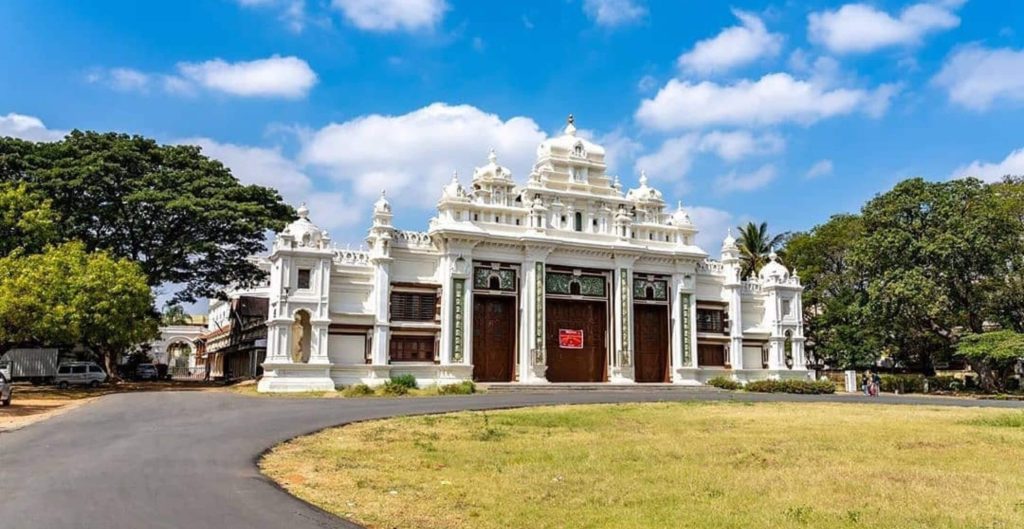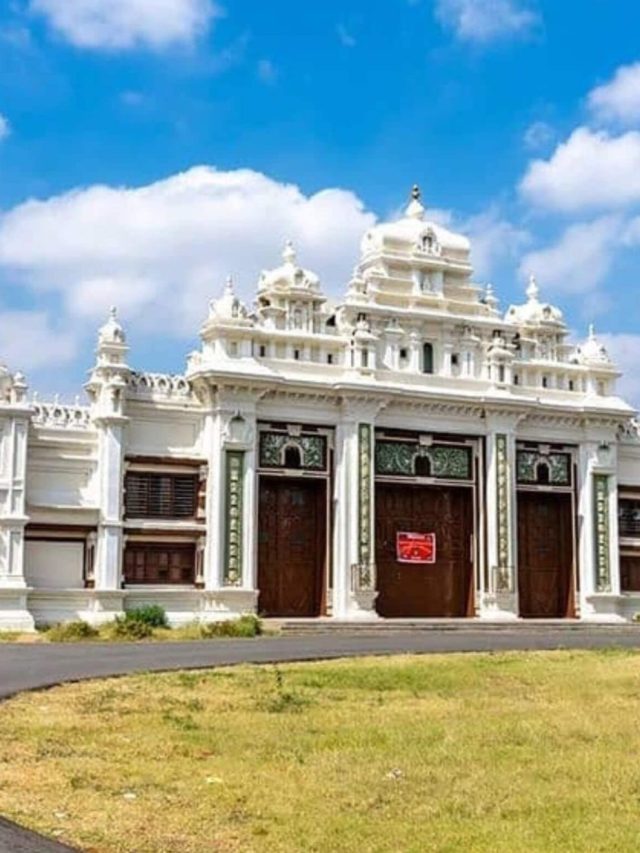Nestled in the heart of Mysore, India, the Jaganmohan Palace Art Gallery and Auditorium adds to the rich cultural heritage and architectural prowess of the region. This historic palace, originally built in 1861, has undergone several transformations over the years, each leaving its mark on the architectural landscape of the palace complex.
Jaganmohan Palace Art Gallery Mysore
The history of Jaganmohan Palace Art Gallery and Auditorium dates back to the reign of Mummadi Krishnaraja Wadiyar III, one of the most illustrious rulers of the Kingdom of Mysore. During the Nagar uprising, the Mysore Palace was seized. However, an unrelenting king ordered the building of a large mansion, near the old palace grounds. This new palace built in 1961 was lighter and more modern than its predecessor. It was made of brick, mortar, invaluable jewels and wood.

During the wedding of Princess Jayalakshmi Devi, the palace caught fire. Hence it was demolished and rebuilt from 1887 to 1912. Sri Jayachamarajendra Wadiyar placed the building under a trust and allowed the public to view it for the first time in 1915. Within five years, the art gallery expanded with numerous gifts. In 1955, his son renamed Sri Jayachamarajendra Art Gallery.

Initially constructed as a royal residence, the family would stay at the Jaganmohan Palace Art Gallery and Auditorium while renovations were underway at the Mysore Palace. It was also the venue for many weddings, coronation ceremonies, official work, and university convocations.
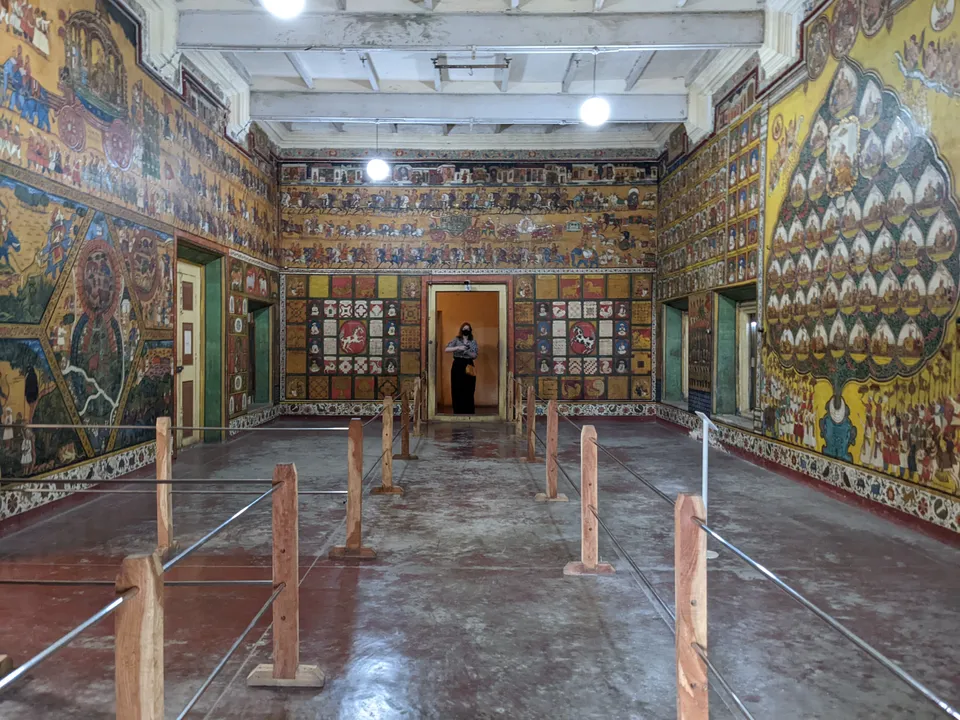
The Architecture of Jaganmohan Palace Art Gallery Mysore
The architecture of the three-storeyed Jaganmohan Palace Art Gallery and Auditorium is primarily done in Hindu style. It also mixes Indo-Saracenic and neoclassical designs. The main door has intricate carvings on both sides chronicling the ten avatars of Lord Vishnu. The ‘Durbar Hall’ has a carved ceiling as well.
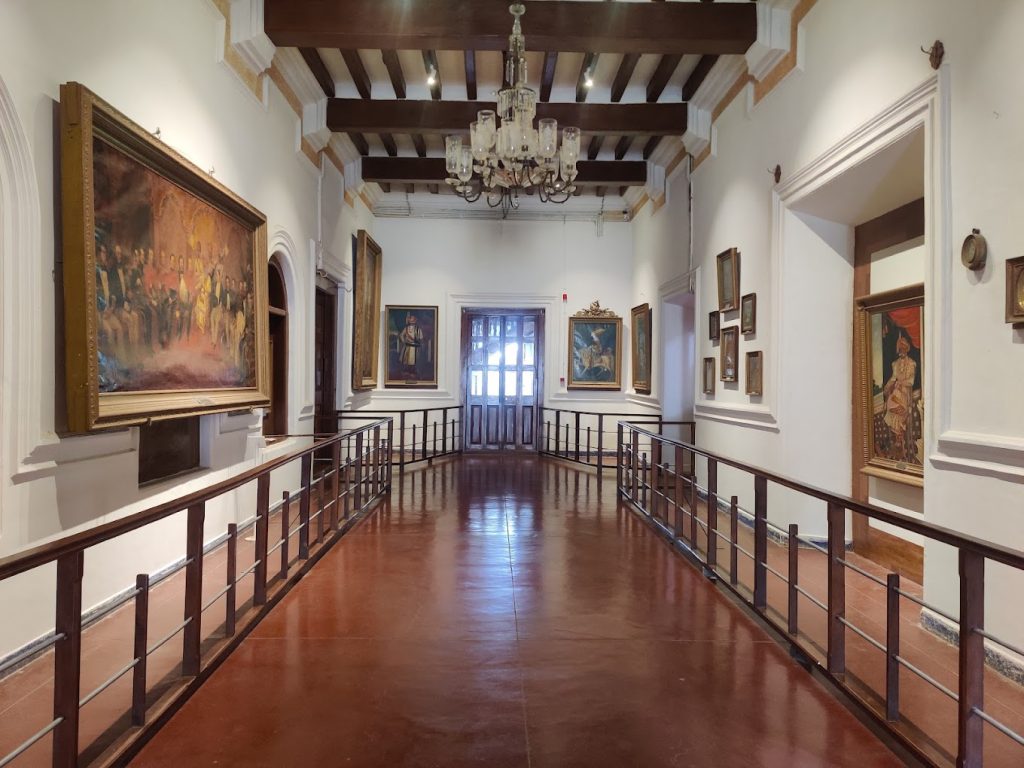
In 1900, the royal auditorium hall was added to the palace. It had three entrances and the mantle carried numerous religious motifs and miniature temples. The place is mostly employed to perform Dussehra programmes such as Carnatic music and dance.
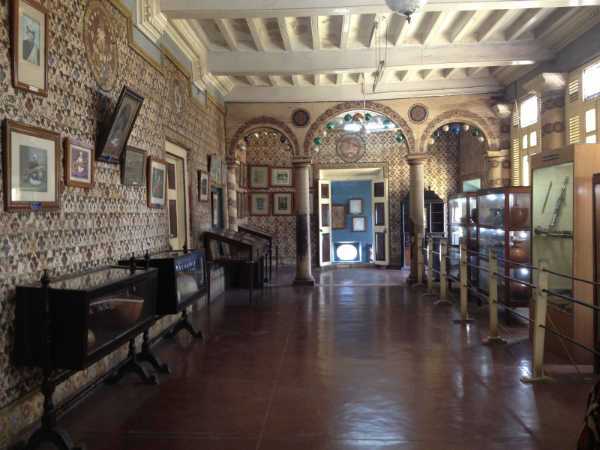
Artefacts at the Jaganmohan Palace Art Gallery Mysore
The Jaganmohan Palace Art Gallery and Auditorium has a mural featuring the earliest known effigy of the Mysuru Dussehra painted with natural dyes. It also features a family tree describing the royal genealogy. The art gallery boasts the largest collection of artefacts in South India which exceeds 2000 articles. These correspond to different styles of Indian art styles — Mysore, Mughal, and Bengal School. They also house carved musical instruments from around the world such as veenas, wind harps, and sitars, among others.

The walls of the gallery are lined with paintings by renowned artists such as Raja Ravi Varma, whose masterpieces depict mythological themes, royal portraits, and scenes of everyday life in 19th-century India. In a dark room, you would find one of Sawlaram Haldenkar’s, ‘Lady with the Lamp,’ the sole exhibit in the room. The painting continues to haunt the viewers with its beauty and the use of light. Apart from them, artists such as Titian, the Ukil Brothers (Sharada, Ranada, and Barada Ukil), Rembrandt, Nikolai Roerich, Svetoslav Roerich, S.G. Helen, Rabindranath Tagore, P.P. Ruben, K Venkatappa, and Abanindranath Tagore.

There are also displays of war weaponry, gold leaf paintings, ivory carving, sandalwood sculptures old coins, furniture, brass, pottery and currency at the Jaganmohan Palace Art Gallery Mysore. Another artefact, a 160-year-old French music calendar clock displays a parade of miniature soldiers every hour, with a bugle and beating drums marking the minutes and seconds respectively. They also have a painting made on a rice grain, accessed through a magnifier.

Image Courtesy – Borrbo

